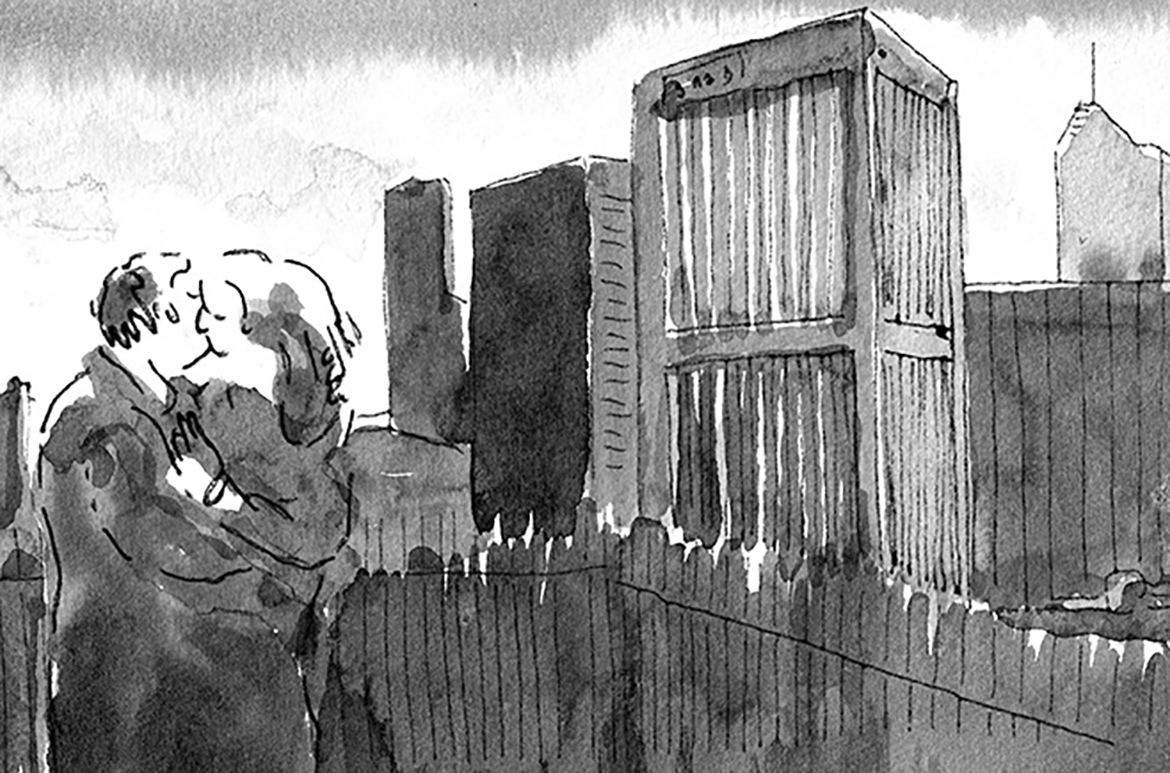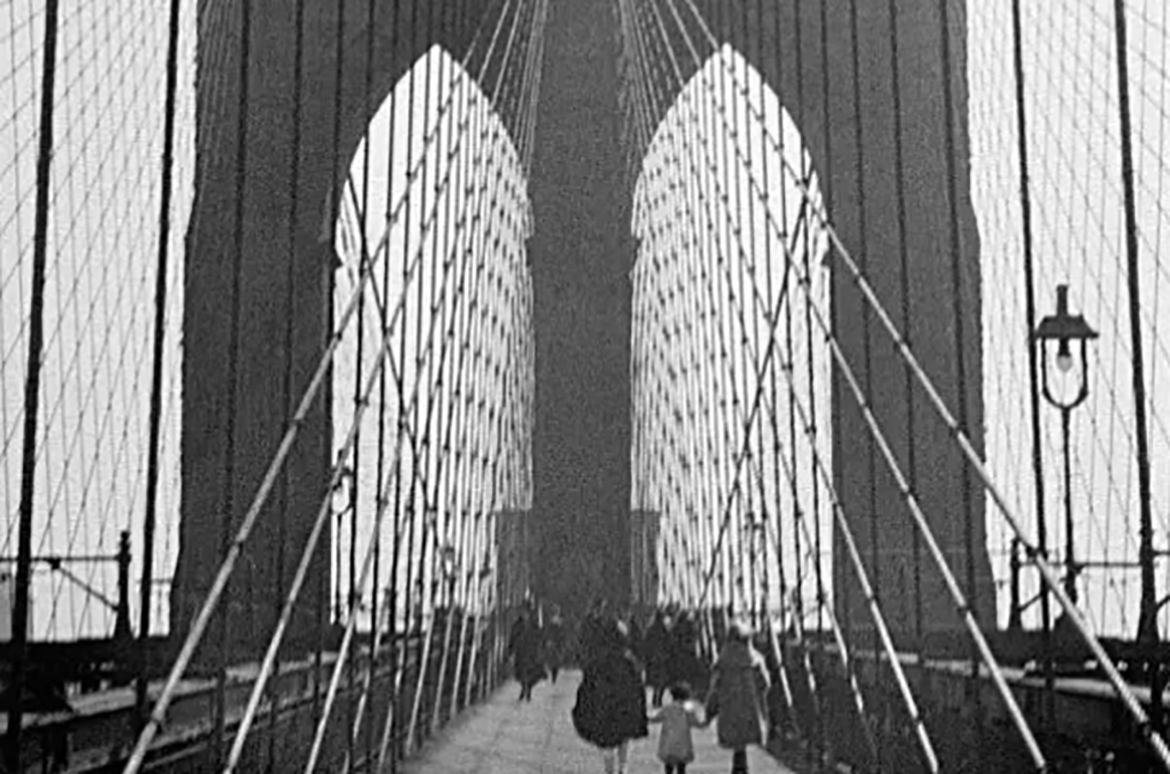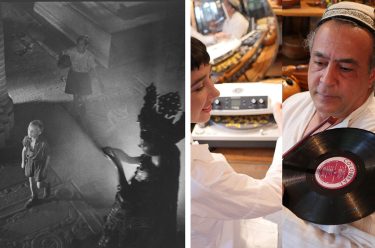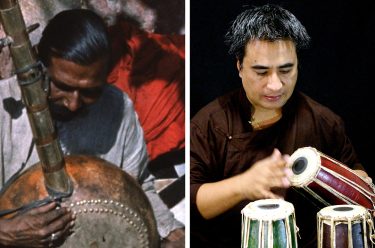We offer a rare treat for this months Live Music & Film City Symphony event at 11.00am Sunday 22 October — a classical pianist who is a veteran of silent film performance. Mauro Colombis will be fresh from the world’s premiere silent film festival — Pordenone Silent Film Festival — in Italy where he was on stage. The four live music accompanied films for your viewing pleasure traverse the USA and Europe.
Manhatta 1921, which is often cited as the first City Symphony film ever made, combines lines from Walt Whitman’s poem ‘Mannahatta’ with 65 city shots to form a proud and majestic portrait of Manhattan.
Melbhattan 2012 is a playful, animated reimagining of contemporary Melbourne.
Douro, Faina Fluvial (Labor on the Douro River) 1931 is embedded on the banks of the Douro River which flows through the hometown of Portuguese film director Manoel de Oliveira.
Rien que les heures (Nothing But Time) 1926 captures a day in the life of Paris from dawn till dusk. Brazilian director Alberto Cavalcanti invents new ways to capture the city: the hardworking wearily return home from their jobs, a sailor deeply kisses his beloved, the camera zooms through the air looking out from a merry-go-round and eyes peer out from a darkened cinema screen.
Get tickets to City Symphony Live Music & Film series
Australian Cinémathèque, GOMA
11.00am, Sunday 22 October 2023
We asked Mauro Colombis about his musical beginnings in Italy and how he prepares for silent films.
Rosie Hays / You have been specialising in silent film live piano accompaniment for over two decades. How did you first get involved in this art form, and what continues to draw you to it?
Mauro Colombis / I come from Pordenone, Italy, the town where the important silent film festival “Le Giornate del cinema muto” takes place every year. When I was about twenty years old, I was invited by my piano teacher to attend the events of the festival. The first time I watched a silent film was during “The Giornate”, I do not remember which film it was, but I still remember how I felt about the music, or better, about the combination of moving images and music. The piano sounded like as if there was a music score to play, but it was completely dark and I could not understand how the pianist could read any sheet music, on the other side, I thought he was improvising, but as the music matched very well with the film, I thought it was not possible that he was making up the music…so I was astonished, unable to solve the mystery… One week later I met at the train station one of the founders of the festival. We had a conversation about music and silent films, he confirmed that on the night I was in the theatre, the pianist had improvised, he explained that almost all the screenings had improvised piano scores, as there was no way to provide the films in advance to the musicians. He also invited me to accompany a silent film, saying that it would be nice for the festival to have a local pianist. That’s how, a few months later, I accompanied my first film. What I like about this way of making music is the combination of creative work and the emotions given by watching the screen as the film runs, I feel strong emotions when I “enter” into the film with the music I play.
Rosie Hays / Where do you start when thinking about making music for silent films? Do you take a specific approach when starting new projects?
Mauro Colombis / I use different ways to make music for silent films, not necessarily in the same order. At the beginning, when I am given a silent film to accompany, I always try to get as much information as possible, just to have a historical context. Then I watch it, once or more times. As I watch it I try to hear in my head musical themes and I try to fix them in my mind. I also play these music ideas at the piano to make them “real”. I also work when I’m not watching the film or playing the piano, for instance, sometimes I go for a walk near the water, not far from my house, and as I walk I see the film in my head and I try to feel the music, I love very much walking and making music at the same time. Other times I simply put my laptop on the piano and I start playing the film and playing the piano. I also record the music I play, so that I can easily come back to what I like better. At times, I just improvise at the piano without running the film but thinking of a particular scene. All these ways to create music for a silent film are equally important to me.

Rosie Hays / Your style combines composition and improvisation. What attracts you to the combination of these techniques? How do you determine whether a particular part of a film requires a more composed or improvised approach?
Mauro Colombis / The way I work doesn’t lead to a neat distinction between improvisation and composition. To me, in some way, improvisation is instant composition. I could say that the improvised parts are those ones that I play once, on stage when I let the notes flow from the keys, the composed parts instead are based on something I have already played at an earlier time. They can be musical themes, or vague rhythmic or harmonic structures. I do not usually write the music I play unless I have to play with other musicians. I prefer to have parts to improvise when I perform on stage, as I believe that there is always the possibility to create something beautiful, new and unexpected without preparation.
Rosie Hays / You are known as a highly versatile pianist and composer – when you perform, you blend together composition and improvisation, ranging across a variety of styles of classical and jazz piano music. I’d love to hear how you have approached making the score for these four City Symphony films, and what we can expect from your performance?
Mauro Colombis / My musical education started even before I started learning the piano, Since the age of two I used to spend a lot of time listening to classical music, tapes or records. This early age music activity helped me to get a good musical ear and to improvise in the style of the classical composers I played. I still listen to a lot of music, jazz, folk, rock, to enrich my playing with new combinations. On this particular occasion, part of the City Symphonies program, the music I will play will try to help the audience to find themselves in the places shown by the films.

Rosie Hays is Associate Curator, Australian Cinémathèque, QAGOMA
Upcoming live music & film
Live Music & Film: Nothing But Time 1921–2012
Live Music & Film: Man With a Movie Camera (with violin) 1929
City Symphony special ticket offer
See the full series and save! Buy 5 to 9 tickets and receive a 10% discount. Buy 10 tickets and receive a 20% discount. Get tickets
The Australian Cinémathèque
The Queensland Art Gallery | Gallery of Modern Art (QAGOMA) is the only Australian art gallery with purpose-built facilities dedicated to film and the moving image. The Australian Cinémathèque at GOMA provides an ongoing program of film and video that you’re unlikely to see elsewhere, offering a rich and diverse experience of the moving image, showcasing the work of influential filmmakers and international cinema, rare 35mm prints, recent restorations and silent films with live musical accompaniment by local musicians or on the Gallery’s Wurlitzer organ originally installed in Brisbane’s Regent Theatre in November 1929.
Featured image: Production still from Manhatta 1921 / Director: Paul Strand, Charles Sheeler / Image courtesy: Light Cone
#QAGOMA


